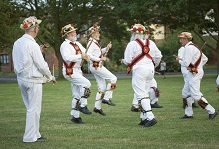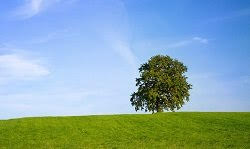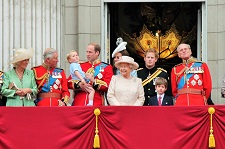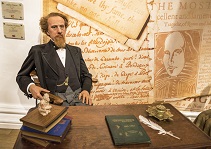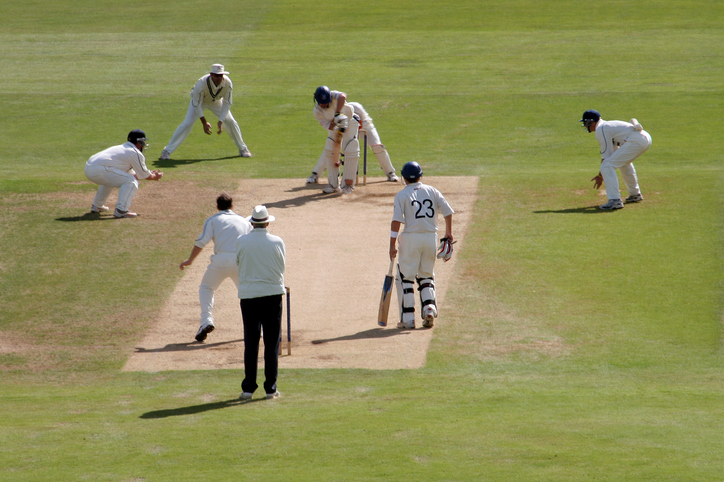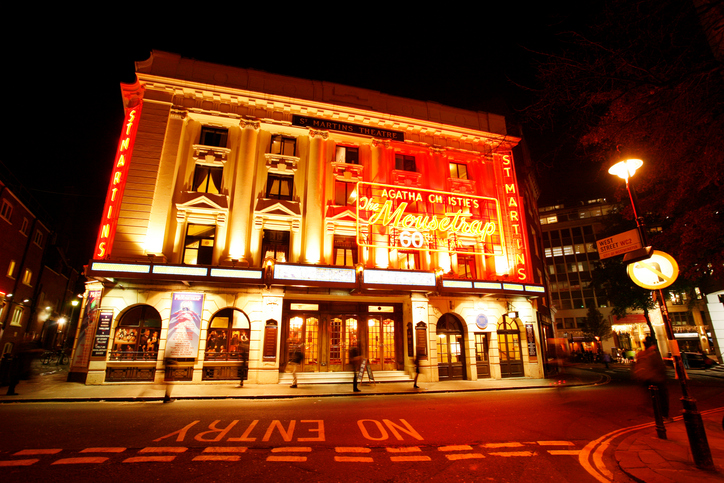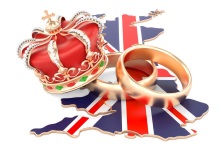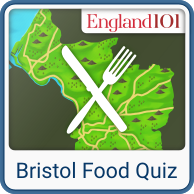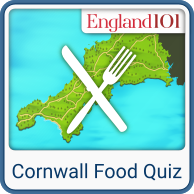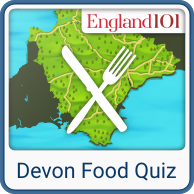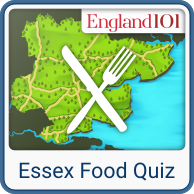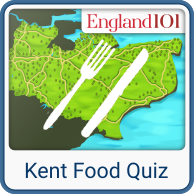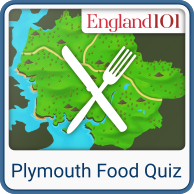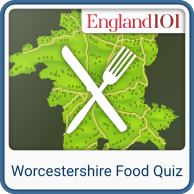English Food 101
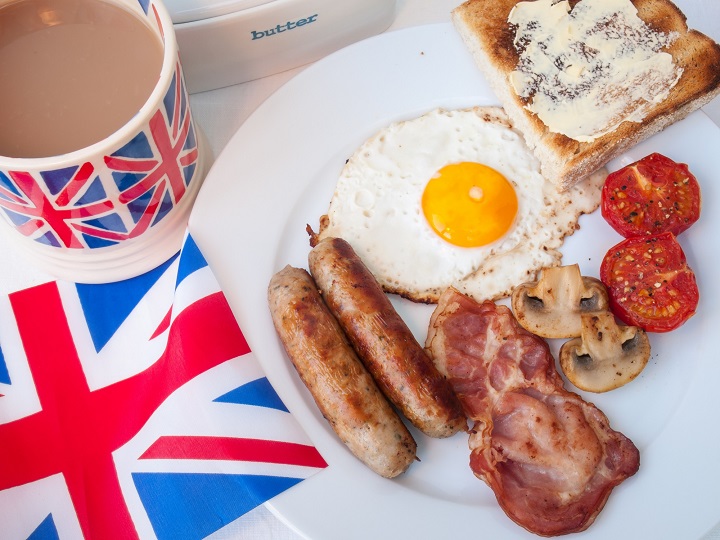
A Brief History of English Food
Through history, England has not had a good reputation for its food. This is not serving English cuisine well, because it’s actually wonderful. And the foods that England is most famous for, are the basis for many of the foods that people in the English diaspora all over the world eat to this day. English cuisine is the foundation of western diets all over the world. This culinary history can be felt all over the world. And tasted.
Traditional English food is well-known known for its simplicity of ingredients and flavours, and while much of England’s negative associations with food originates from the struggles the country faced post-World War II due to rationing, things are much different today. Thanks to a revival of English food culture and foreign influence, England has now become a global food superstar - home to some of the greatest chefs and restaurants in the world. While English food has become the lingua franca of food around the world, the world has come to England, with immigrants from throughout its empire bringing new dishes to Britain - such as Indian and Caribbean foods.
England is, of course, home to what is considered “classic” English cuisine, such as fish & chips, roasts, and afternoon tea, but it has also become a renowned epicentre for international food from India, China, Africa, and the Americas. This is largely because of British Imperialism during the 19th and 20th centuries when new foods were brought back from other countries, and then again by a wave of post-world War II immigration to England.
Read on for a British food history timeline to discover more about the incredible history and evolution of English food. From the origins of Britain’s most famous dishes to a breakdown of different types of food to recipes you can try at home, in this article you’ll discover everything you could want to know about English food and its interesting background. We also hope to show what an important role English food has played in its cultural exports.
Roman Era
While Britain was under the control of Rome, for nearly 400 years, its cuisine was positively European. Meat & fish was popular, as were grains imported from all over the Roman empire. Olive Oil was a staple and had to be brought in from overseas. Wine was also popular, beginning England’s interest in the titular grape. The Romans introduced wine and brought vines to the island with them so that it could be cultivated in Britannia. Food culture was shared closely with Gaul, across the English channel (and would later become French- you can see the beginning of the culinary rivalry already)
Early Days of English Cuisine
In the Middle Ages, English food closely resembled the food that was eaten in other European kingdoms. Overall, the food was very simple because the global spice trade had yet to get started. Most people ate whatever meat they could catch, such as local birds as well as vegetables and (occasionally) fruit, which were pickled and salted for preservation. Exotic fruits were hard to come by and enjoyed mostly by the royalty and aristocracy.
In the later middle ages, spices became more common but they were expensive and had to be imported, and therefore were only accessible to the wealthy, who used them to season fresh-hunted meat and fish. Many people in the Middle Ages, specifically the rich, stayed away from fruits and vegetables as these foods were associated with causing illness. At this stage, cane sugar did not exist in the diet of English people.
The Tudor and Elizabethan Period
At the beginning of the Tudor period, much of the vegetables available were cabbages and onions. Peasants still stuck to the types of meat they could gather, such as blackbirds, pheasants, hens, and ducks, while the wealthy ate more expensive meat such as venison, swan, geese, and boar.
However, as European nations began ocean exploration, new foods were introduced from the Americas like tomatoes, potatoes, spices, peppers, and game. These items gradually made their way into the mainstream English diet. It cannot be overstated how dramatically the diet of the English changed once its explorers began colonizing the new world. Can you imagine a Sunday Roast without potatoes? Sugar cane was also discovered and began to be cultivated in England’s colonies in the Caribbean (which drove the early slave trade). Sugar became part of the English diet. Tooth decay became a real problem in this time period as the over-consumption of sugar began to rot the mouths of the English (perhaps the beginning of the mostly untrue stereotype that the English have bad teeth).
Georgian Cuisine
The Georgian era - which ran from George I in 1660 all the way to George VI in 1830 - was a golden age for English expansion around the world. It saw the rise of the North American empire, then its loss in the American Revolution. It saw wars with the French and in India. But it also drastically changed English food.
This era saw the birth of common English dishes such as roasts - like roast beef. Georgian diet was very rich with butter, cream and eggs - along with meat, that could now be transported quickly via developed transportation routes. Storage was also improved with the Georgians developing ice houses to store food longer before being eaten. Sugar was now a common, everyday addition to food. This field the Caribbean slave trade and many of Britain’s iconic stately homes can trace their wealth back to slavery.
Spices were very popular in the Georgian era as their variety and type could be sourced from all over the expanding British empires. Stuff like nutmeg, cardamom, cloves, and peppers became very popular in everyday cooking.
The Victorian Era
Food and cooking in Victorian England, just like in the Middle Ages and the Tudor periods, differed greatly depending on social class. The wealthy had access to fresher ingredients, like meats and cheeses, while lower-income groups were often limited to potatoes and vegetables, which often weren’t even fresh. People did the best they could with what they could get. Those that worked the land had the worst diet of all - scurvy was common in the lower classes.
The biggest shift in food culture during this period of time was the general rise in etiquette - both in general society and especially for eating. It was thought that an individual (specifically women) could rise in the social ranks on proper etiquette alone as it was so important. There were also new developments in cooking and tools used to cook food, which facilitated better sterilization of food that hadn’t been seen before this period.
The Victorian era brought about some strange food delicacies. Jellied Eel was served in markets in London and was very popular with working-class people as well as Sheep’s Trotters (sheep’s feet) which were and affordable meat for lower-income groups.
Kedgeree was also a new dish that first time incorporated flavours from India. It’s a curry dish with rice, smoked fish, milk, and spices like coriander and turmeric. It quickly became a popular English breakfast staple during the Victorian period.
Imperialism & Colonization
When European nations discovered the Americas, a vast array of new foods and spices were introduced to England, such as:
- Coffee
- Cocoa
- Sugar
- Turkeys
- Oranges
- Tea
All of these items quickly became highly valuable and expensive goods. The more powerful Britain became, the more they invested in the search for new land and the food it offered.
Discovery of new ingredients served as a way to make money through trade but also bringing larger variety to England’s own dishes. Having established British colonies all over the world meant that the English diet back home broadened widely. This new gateway allowed for a flood of foreign influence to take over England - a theme that continues to the present day.
For example, many Americans in the English diaspora will find that their diets were heavily influenced by English cuisine and culture. The holiday of Thanksgiving originated with the English tradition of Thanksgiving feasts. While the Turkey was a new world food, it quickly became adopted in England and is now served at Christmas time. Things like fish & chips, while not popular in America, are popular in Australia and New Zealand (where chippies have become common).
Food in Wartime
Britain’s bad reputation for food has its origins in World War II. The island was invaded by Americans in the build-up to the invasion of Europe and they were exposed to English cuisine. The problem is that it was very poor at this time. Food was scarce in England without its trade with continental Europe. Anything that couldn’t be grown, had to be brought in from abroad. But Adolf Hitler send massive fleets to attack incoming shipping. Any food that made it through was a blessing. It’s said that there wasn’t a banana in Britain for years until after the war. Can you imagine not having a banana for years?
Rationing
When war was declared, rationing came into effect. Each citizen was entitled to a basic ration. They would have a ration book, where every food purchase was recorded. They had coupons they could use each week for certain foods. And this food wasn’t free - even though it was rationed, you still had to pay for it. As a result of rationing, Britain had to get creative with its dishes. They were often heavy in vegetables and light on meat. Britain suffered from a poor diet during the war, and it was this poor diet that American troops encountered while they amassed in England during the war. Americans didn’t have rationing for food back home, so the whole thing was foreign to them.
Victory Gardens
One way to supplement rationing was to grow your own fruit & veg in your own garden. Anywhere that was green open space was dug up and turned into a garden. It became a patriotic duty to grow as many vegetables and potatoes as the ground could support. It was less that would have to be imported and it also ensured a family could stay fed if there were shortages - which there often were.
Imported Foods from convoys
All food came in via convoys from North America. Massive flotillas of ships would bunch together to cross the Atlantic and hopefully avoid German attacks. Many ships didn’t make it. But foods that could be transported weeks at sea became necessary in Britain for life to exist - such as evaporated milk.
When the war was over, things took years to return to normal. Rationing didn’t end until well into the 1950’s and food security, to this day, is very important to Britain. They have to be self-sufficient because they’re an island and it doesn't take much to cut them off form the world!
English Food Today
Modern English food is a hotbed of multicultural, high-quality dishes. Despite its negative reputation it earned for food due to a lack of money and resources in the early 20th century, today things have changed dramatically and many of the world’s most famous celebrity chefs are British (like Gordon Ramsey and Jamie Oliver). Tourists come from all over the world to sample the many different cuisines England has to offer. Indian food especially has become ingrained in English culture, in fact, just a few years ago Chicken Tikka Masala - a creamy, orange-coloured chicken curry - was named England’s national dish.
Thanks to many famous English chefs and cooks, food in England has experienced a renaissance of sorts. Famed Chef Fergus Henderson is credited with taking popular and well-known food in England and transforming it into a nose-to-tail dining style with his restaurant St. John. His efforts have brought attention back to English food as he plays with classic dishes while implementing a modern, heightened twist. He talks about his methods and passion for reinvigorating English cuisine in his book, The Complete Nose to Tail: A Kind of British Cooking.
Other people who have helped improve the reputation of English food are Jamie Oliver, who was named one of the most influential people for food and drink in the UK and Nigella Lawson, who is credited with reinventing the cookbook after publishing How to Eat . These figures and other famous English cooks are largely responsible for getting the British excited about food again and inspiring people to be innovative in their own kitchens. Now, watching cooking competition shows like Masterchef and The Great British Bake Off are national past times - and crucially exported abroad, building a much better picture of English food.
Furthermore, today there are over 100 Michelin-starred restaurants in all of the UK, five of which are 3-starred restaurants (the highest mark) and are all located in England. Today, England is considered one of the best destinations in the world for sampling great food.
Classic English Food Institution’s
Pubs
The word “pub” is short for “public house” which carries a lot of meaning in regard to the purpose they serve for the English.
Pubs first appeared in England when the Romans settled and built a network of roads throughout the country. Along these roads “tavernae”, or taverns, began popping up as businesses to serve thirsty and hungry travellers passing through. As the English were already drinking a lot of ale, it became the staple drink available in these establishments and inspired the craft of ale-making to become even more advanced.
Even after The Roman’s departure, Anglo-Saxons carried on the tradition of roadside stops, which came to be better known as “alehouses”. They were created from an existing home, therefore establishing the cosy atmosphere that you can still find in pubs today.
Taverns, alehouses, and inns soon came to be collectively known as “pubs” under King Henry VII and the owners of these establishments were required to get licenses. Soon, they became social hubs for people in the community to converse and hold important meetings.
In the Industrial Age, particularly in the large cities where workers often lived in cramped spaces, the pubs served as a sort of living room and a place of refuge for many people to escape the hard life and stress of the outside world. Homes were often crowded places, where there was no privacy; the ‘local’ was a great way to get out and socialize. Pubs continued to serve as a comfort for British people through the bleak times of economic depression and both World Wars, all the way up to today. In fact, it is thought that one in four British people meet their husband or wife in a pub. Connecting at the local pub is one of the most import aspects of English culture that there are now countless English pub imitations all over the world.
As far as food, traditional pub food most often consists of typical English dishes such as fish & chips, roast dinners, bangers & mash, and meat pies. Not only are pubs great places to stop for a drink, but as more “gastropubs” sprout up throughout England, they are becoming destinations for great food, too. Some pubs will have proper restaurants inside them. There are some pubs, however, that still only serve drink.
Fish & Chip Shops
It doesn’t get more British than fish & chips, which is a dish that became a fundamental part of the English diet in the 1800s thanks to Jewish refugees. Traditional English fish & chips is typically a large fried fillet of either cod or haddock served on top of thick chunks of fried potatoes, or “chips” with a side of mushy peas. Best eaten with malt vinegar.
While the question of where the first fish & chip shop (also known as a “chippie”) originated is hotly debated, the two very viable possibilities are Lancashire and East London. What we do know is that the rise of this favourite English meal came about thanks to the country-wide implementation of the steam rail system, which meant fresh fish from the North Atlantic could be transported south quickly for the first time ever.
In the late 19th century, fish & chip shops were largely family-run businesses that operated from the ‘front room’ of the home, just like pubs. Soon, when a wave of immigrants moved to England. They saw the business that fish & chip shops drew, and jumped on the business opportunity. After this, chippie’s spread to become a mainstream phenomenon with shops spreading to Scotland, Ireland & Wales.
Fish & Chips shops really rose to fame during the industrial age when consumers needed a quick, cheap, and filling meal. During both World Wars, Fish & Chips became the national dish of England, as it was one of the few foods not rationed. It is said that fish & chip shops helped Britain win the war as they kept people sustained during wartime—staving off a revolution. At the time, chippie’s were so popular that shops would often have a queue all the way down the street!
Today, almost every town and a lot of small villages will have at least one chippy, serving fresh fish & chips to the locals. These are often the best places to get a quick meal and are much tastier than traditional fast-food chains (thought England even has national chains of fish & chip shops).
Builder’s Cafes
What we know as ‘Cafe’s” today in England were originally coffeehouses where only men were allowed to gather to socialize and discuss important facts of the day. These institutions greatly evolved over time to become stops where working men could get a quick, cheap meal.
Also referred to as “working man’s cafe”, “greasy spoon”, and a “transport cafe”, builder’s cafes often serve classic British comfort food, from full English breakfasts to English bacon sandwiches to hot jacket potatoes.
Cafes started to decline as bigger fast food chains popped up, but they have experienced somewhat of a revival recently. Builder’s cafes are unique to English food culture and are therefore a novelty. Plus, they have something larger food chains can’t offer—the promise of fresh food that tastes like something made from home.
Here are some quintessential British cafes you can visit in London, England:
- Andrew’s Restaurant, Clerkenwell
- The Electric Cafe, West Norwood
- E Pellicci, Bethnal Green
- Regency Cafe, Westminster
Tea Rooms
The UK is one of the world’s biggest tea consumers, which is ironic given that tea is not native to the country. In fact, the tea consumed by people in England largely comes from Sri Lanka, India, and China. When tea first came to England, was an expensive good reserved only for the wealthy who could afford it. Now, tea is widely accessible to English people of all income levels, most of which drink it on a daily basis. It’s estimated that the British drink of 60 billion cups of tea in a year! Tea is equally as popular with men as it is with women. A good brew is key fuel to get through the day.
The English tea shop is more than just an establishment for tea-drinking. Tea rooms are actually where the early feminist movement was able to grow. In the Victorian era, tea rooms were one of the few places women could go without needing a male escort. Tea rooms were also the answer for single women who wanted to have a career and thus would take up employment in these establishments.
Tea rooms soon grew to serve as important hubs for meeting and socializing, but their biggest role was in housing the suffragette movement during the early 1900s. This is because tea rooms were a safe space for women to congregate and for the idea of feminism to spread safely and discretely.
The Aerated Bread Company and J. Lyons & Co. became the pillars of large-scale tea rooms, which J. Lyons & Co dubbed “Corner Houses”. These chains set up tea rooms throughout the country in the late 19th Century. Today you can find tea rooms almost anywhere in England, where you can dine just as the suffragettes once did: over a nice hot cuppa and traditional English tea time food, from finger sandwiches to scones to desserts.
Popular Food Chains in Britain
While American fast food has colonized Britain, there are plenty of native British chains that you can count on enjoying a better meal at. Some examples are:
- Nando’s - This South African/Portuguese import specializes in spicy jerk chicken. It’s amazing.
- Leon - Specialized in gourmet foods served in a box.
- West Cornwall Pasty Company - Specializing in Cornish Pasties.
- Wimpy - The homegrown British equivalent to McDonalds.
- Pret a Manger - While the name is French and they’re all over the world now, they originated in London specializing in freshly prepared sandwiches.
English Meals
English Breakfast
Traditional English breakfast, also known as a ‘fry up’ or ‘full English’ typically consists of eggs, ham, baked beans, grilled tomatoes, mushrooms, blood pudding, and toast all served together. This is the type of meal that is very popular in builder cafes.
However, this isn’t necessarily what the English eat every day for breakfast. Most mornings for the typical English person will be something simple and quick like porridge, toast, juice, or cereal.
Eating a full English breakfast is a pleasure that might be saved for the weekend.
Elevensies
Also known as ‘second breakfast’ - this is usually a small mid-morning break involving a cup of tea and a snack of some kind - usually biscuits.
English Lunch
The English don’t traditionally take a long lunch break the way other European countries do. This is because historically, work and the school have been too far from home so the English will take a packed lunch for their midday meal which they eat with schoolmates or coworkers. A ‘packed lunch’ is a premade lunch meal that is brought to work or to school so people can eat quickly and move forward with the rest of their day. A typical packed lunch may consist of chips, fruit, a drink and also a sandwich—bacon sandwiches and roast beef sandwiches being a popular option for the English.
The Rise of the Sandwich
Did you know it was an English noble who was responsible for the creation of the sandwich? John Montague, the 4th Earl of Sandwich, had a known gambling problem which meant he was often at the card table for hours on end. The Earl requested (during a long gambling binge) for his cook to bring him something that would allow him to eat and gamble at the same time, and thus, the Sandwich was born after the Earl’s namesake. This convenient lunch packed between two slices of bread caught on quickly as an “on-the-go” meal and has been an English packed lunch staple ever since.
Afternoon Tea
English afternoon tea is quite possibly one of the most famous English dining customs. Tea was first brought to England by the East India Company, but as it was an expensive product it was typically reserved only for the wealthy.
It wasn’t until the 1660s that tea was popularized in England when Catherine de Braganza, the Portuguese wife of King Charles II in the 1660s brought it to England, Scotland, and Ireland.
Before that, tea was really only used for medicinal purposes, but since the Queen, herself enjoyed a daily dose of tea, the rest of the country followed suit.
However, ‘afternoon tea’ didn’t become an actual meal on its own until the 19th century. It started with the Duchess of Bedford, who had a habit of eating dinner fashionably late, and therefore began having 4 o’clock tea with sweet snacks and finger sandwiches as a way to refuel between lunch and dinner. The Duchess began inviting friends over to share her English tea parties, which helped it to quickly spread and become an established social event and
English tradition.
Tea is served in the late afternoon, between 4 and 5 o’clock, and consists of small sandwiches, like English cucumber sandwiches, scones with clotted cream and jam, and little desserts and cakes.
Visitors to England can discover some of the best afternoon teas the country has to offer in London alone. Many modern tea rooms even like to add a quirky twist or theme to afternoon tea. Some notable places known for a fun, enjoyable English afternoon tea are:
- The Savoy London for traditional tea
- Sketch London for a tea experience surrounded in art
- B Bakery for afternoon tea in a bus
- The Ritz London for the ultimate afternoon tea
Other popular destinations well-known for their afternoon teas include Cornwall, Somerset, and Dorset.
Sunday Roast
In English culture, the Sunday meal is sacred and perhaps the most important meal of the whole week. Sundays have always been a day that British people did not have to work, therefore nuclear and extended families would take the opportunity to sit together for a big meal and have a traditional English roast dinner.
A Sunday roast dinner menu includes roasted meat (most often roast beef) with Yorkshire pudding (and type of bread roll), gravy, potatoes and other vegetables like cabbage, broccoli, and carrots. Families often make this meal at home, though people visiting England don’t have to be part of an English family to enjoy this meal. Most pubs serve up their own version of a Sunday Roast. In fact, you’ll find the atmosphere in pubs on Sundays to be very warm family-friendly, with people gathering to eat their big Sunday roast meal together.
Sunday Roast in a pub is a critical part of enjoying any trip to Britain. Though you should always book ahead - most good pubs will fill up and you’ll struggle to get a table without a reservation. There are also many country pubs that are known for their Sunday Roasts, many people will plan a countryside walk to end at the pub - and bring along their massive Sunday Newspaper as well.
English Dessert
The English are no strangers to sweets. One thing, in particular, the English like to include in their desserts are dried fruits, which you often find in many English dessert recipes.
Some of the most English of desserts are biscuits, known as “cookies” in the U.S. which are served in more casual environments. Another famous genre of English desserts are “puddings” which can be classified as a steamed cake smothered in a warm sweet sauce. Some well-known English pudding desserts include:
- Spotted Dick - steamed cake with currants and suet and topped with vanilla custard.

- Jam Roly-Poly - Thin rolled cake with jam in the centre served with custard.
- Sticky toffee pudding - Moist sponge cake covered in a hot toffee sauce and occasionally custard, too.
Another common and popular type of British dessert is a “bun”. Different types of buns include:
- Scones - These are the most quintessential of English buns. A sweet, dense round bread, Scones are most often served with tea, along with jam and clotted cream.

- Chelsea bun - A Chelsea bun somewhat resembles the American “cinnamon bun” because of its rolled dough, however, this particular bun contains raisins and sometimes other types of fruit.

- Hot Cross bun - A round-shaped, spiced-sweet dough containing raisins or currents and marked by a cross on the top, hence the name “hot cross bun”.

There are a plethora of other types of English desserts, from digestives to cakes to tarts and more. You can read more about the culture behind English desserts here.
English Drink
The English are well-known for their ales, and the creation and consumption of them can be traced all the way back to Medieval times. Read below to discover more about English drink from English ales to the complicated history of gin to the fall and trendy rise of mead, and more.
Ale
English ale-making dates back thousands of years; it’s a very old English drink. During the Middle Age and Tudor periods, people mainly drank Ale, even children, although at the time it was non-alcoholic. Ale was preferred over water because it staved off illness since due to sterilisation through the boiling process. The calories and nutrition from Ale also provided working populations with the sustenance they very much needed, especially when food was scarce.
Just like tea, Ale is deeply ingrained into English culture, but unlike tea, Ale originates from England. The first inhabitants of England used what they could to make ale, which was mainly barley as it thrived in the English weather (while wine grapes did not).
Ale breweries grew and carried on into the Industrial Age, and the recipe for ale-making greatly evolved with time. English continuously discovered to new items to add to ale such as hops, which today are largely grown in Kent. In England, you can find many different types of ale, from English pale ale to English brown ale and English mild ale.
Gin
Gin is a distilled drink with a main ingredient of juniper-berries, but it can vary greatly in flavour and style depending on how the distiller decides to make it.
Gin in England has a somewhat dramatic history. At the beginning of the 18th-century, gin consumption in England increased rapidly, specifically in the London area. Gin came to be so overconsumed that it lead to an epidemic of drunkenness, which was labelled “The Gin Craze”
but was finally calmed by the Gin Act of 1751.
Today, Gin is consumed in much more reasonable quantities most of the time, but it is still viewed as a staple drink of the English. In fact, gin has experienced a revival in the form of English gin cocktails thanks to the craft beer and alcohol movement.
Pimms
Pimms is an originally English gin-based liqueur with added spices like bitter herb and citrus. It was created by a farmer’s son named James Pimm in 1831, and it is most well known in association with a “Pimms Cup” —a drink that mixes lemonade, Pimms, cucumber, and ginger ale. This drink is very popular in the summer months - and is usually the drink of choice at the horse races.
Mead
Mead is a drink made from honey and is fermented with water and added spices, hops, barley and sometimes fruit. Mead was very popular during the Tudor era and was made a lot of the time in monasteries. Mead was also the common drink to have weddings. In fact, the term “honeymoon” allegedly comes from Mead, also known as “honey wine”.
Mead has made a comeback in recent years in England. This is thought to have originated from Noma restaurant owner Rene Redzepi, who has brought back traditional Northern European food ancestry and ingredients—including Mead which he has helped popularize.
Cider
Today the English are some of the biggest consumers of cider in the world. The Romans are thought to have brought the first apples into England and started orchards, but it wasn’t until after the Norman conquest in 1066 when the craft of cider-making was brought over from Normandy into England. As time went on, cider-making in England became more refined as the English learned how to streamline the process.
Today English-made cider is widely available in pubs, restaurants, and other food establishments. The type of English cider and flavour of the cider is heavily regional. English pear cider is popular, too. Some of the most notable regions for cider in England are Kent, Somerset, Dorset, Herefordshire, and Devon.
Traditional Christmas Food
Traditional English Christmas dinner has changed heavily over time. Back in the middle ages, it is said that Christmas dinners of yore featured a gigantic pie measuring nine feet in diameter! This pie contained all kinds of meat such as geese, rabbits, duck, pigeons, blackbirds as well as 20 pounds of butter.
Luckily today things have changed, so at-home cooks don’t need to feel the pressure to make a pie the size of an entire English kitchen. It is said that Henry VIII was the first king to have Turkey at Christmas, which is the staple meat served for the traditional English Christmas meal today.
Here are the food items that are typically included in the traditional English Christmas dinner:
● Roast Turkey (or goose)
● Roast potatoes
● Stuffing
● Yorkshire pudding
● Cranberry sauce
● Gravy
● Brussel sprouts
Two more uniquely English items served at Christmas are Mince pies, which are tiny pies filled with dried fruit, nutmeg, cinnamon, and sugar and serve as a perfect dessert for after the big Christmas meal. Before the modern era they actually use to contain actual meat, now it’s a sweet treat.
Another dessert is Christmas pudding, also known as “figgy pudding” when served with figs. It is a brandy-soaked cake containing dried fruit. The pudding is so important to the Christmas feast that it will be prepared months in advance and stored so that the brandy in it can cure.
A common drink served around Christmastime is “mulled wine” which is wine mixed with spices like cinnamon, nutmeg, sugar, and fruits and served hot. It tastes like Christmas.
Regional Specialties
We’ve touched on various regions of England and their food and drink areas of expertise, but here are some more notable regional specialties in England:
Cream Tea
Cream Tea Cream tea is not actually cream in a cup of tea. Cream tea refers to a light afternoon tea meal, consisting of scones served with clotted cream and jam. Both Devonshire and Cornwall are the two famed regions for their cream teas, the difference between them being simply the order in which the clotted cream and jam are layered.
Lancashire Hot Pot
Lancashire hot pot is a dish that was created out of necessity - it provided much-needed sustenance that working English folk needed to get through the winter. It traditionally consists of bone-in lamb and carrots topped with sliced potatoes, which serve as a sort of crust over the meal.
Yorkshire Pudding
Yorkshire Pudding first appeared in a cookbook in 1737, and at the time it was labelled “dripping pudding”. It was devised originally in the North of England as a way to make use of the fat drippings from spit-roasts and served as a good use for wheat flour, which was relatively new to English cuisine at the time. Now, Yorkshire pudding is a staple in Sunday Roasts and most traditional English meals.
Cornish Pasty
Much like the sandwich, the Cornish pastry was developed as a convenient lunch for mining workers in Cornwall who had to eat their hot lunch on the go. The Cornish pasty is a semicircular shaped crust housing warm meat and veggies inside. The pastry has become so popular today, that you can find these famed “Cornish” pastries outside of Cornwall as well.

Cumberland Sauce
Cumberland sauce is a fruit sauce typically used on darker meats such as venison, pork, and lamb. While this sauce originated in Germany, it has now become synonymous with the Cumbria region in England. The sauce includes red currants, port or claret, dry mustard, pepper, orange, and ginger.
Sussex Pond Pudding
Hailing from Sussex, Sussex Pond Pudding is another moist dessert made of suet pastry and oozes with butter and sugar. The more modern take on this dish contains a whole lemon inside.
Lincolnshire Plum Bread
Lincolnshire Plum Bread is a loaf of soft bread containing dried bits of plum, and it’s commonly served along with afternoon tea in Lincolnshire, but you can also buy it in the local bakeries when you visit.
Classic English Dishes You Must Try
We’ve taken you through British food history, and talked about all kinds of traditional English meals and regional food. Below are 11 more classic English foods you should try for yourself at home!
Steak & Ale Pie
A classic meat pie with steak pieces stewed with vegetables and English ale in a sumptuous crust.
Sunday Roast
We covered this earlier, and while this is an entire meal, it’s actually not that hard to make a whole Sunday roast on your own to enjoy with friends and family.
Scones
The basic component of cream tea, scones are a soft baked good lightly sweetened and can be made plain or with fruit. Scones are what Americans would equate as a “biscuit”.
Fish & Chips
While it does require a fryer, this classic English dish typically bought at a “chippie” can be done in your own kitchen if you don’t have many fish & chip shops near you.

Chicken Tikka Masala
Try your hand at one of Britain’s national dishes - a chicken dish dredged in sumptuous orange curry.
Bangers & Mash
Bangers stand for sausage and mash means mashed potatoes - all smothered in an onion gravy. For an easy, quick meal this classic English dish is a must-try.
Toad in the Hole
The origin of the name of this dish is still unclear, but what is known for sure is this recipe never contained cooked toads (contrary to popular belief). This is a batter pudding English dish. It’s basically a large Yorkshire pudding with sausages placed in rows inside the batter. When it cooks, the batter rises up all around the sausages and it’s then topped with onion gravy.
Ploughman’s lunch
Ploughman’s lunch is the very essence of a simple English meal. Served cold, with bread, cheese, pickled accompaniments like chutney and onion, egg, and ham. It was the staple meal for rural workers in England for centuries and still thrives today for British people.
Traditional English Breakfast
Bacon, eggs, toast, baked beans, and all. A traditional English fry up should definitely be in your repertoire of breakfast recipes.
Scotch Egg
A Scotch Egg is something you will regularly find in many gastropubs, and no, scotch does not necessarily refer to Scotland. It is short for “scotched” which means hashed, as in the hashed meat surrounding the egg. A Scotch Egg is a boiled egg wrapped in sausage meat, then breaded and fried.
Make your own scotch egg at home.
Bubble and Squeak
This is another traditional English breakfast. Bubble and Squeak is typically boiled potatoes and cabbage mashed together and then fried in a patty shape. Instead of cabbage, any leftover vegetable can be used in this dish.
Black Pudding
Also known as blood pudding, black pudding is often served along with a full English breakfast. It is a sausage made from pork blood, fat and suet, and some kind of grain like oats or barley.
We hope you’ve enjoyed getting more familiar with English food and all of the stories and origins of Britain’s most beloved food traditions, dishes, and regional specialties.
Are you ready to test your English Food knowledge? Take our quiz!
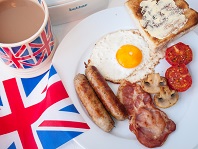

_(2).jpg)


